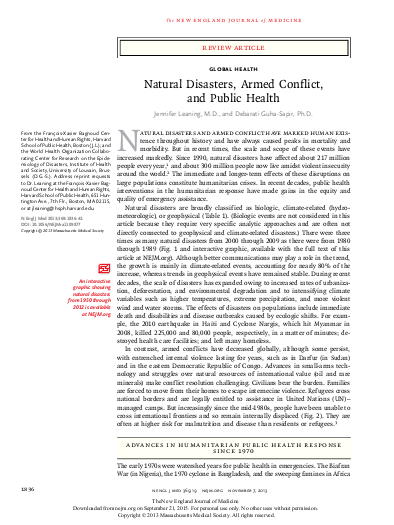
Natural disasters and armed conflict have marked human existence throughout history and have always caused peaks in mortality and morbidity. But in recent times, the scale and scope of these events have increased markedly. Since 1990, natural disasters have affected about 217 million people every year,1 and about 300 million people now live amidst violent insecurity around the world.2 The immediate and longer-term effects of these disruptions on large populations constitute humanitarian crises. In recent decades, public health interventions in the humanitarian response have made gains in the equity and quality of emergency assistance.